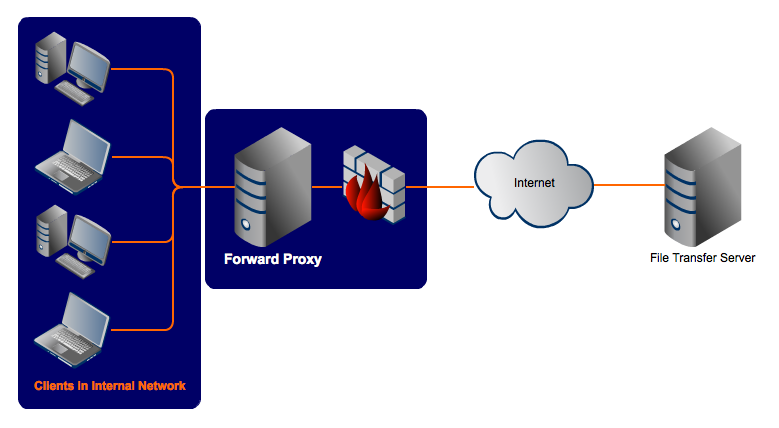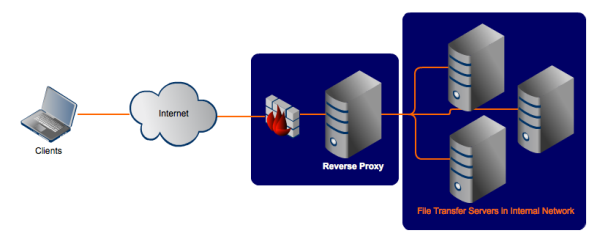How Can We Help You?

A proxy generally refers to an intermediary between a user and a web server. You probably know about proxies that serve a variety of different purposes. In this article, we will cover the difference between forward and reverse proxy servers.
First of all, let's understand what forward proxy and reverse proxy are, and achieve the same understanding in concept.
What is a forward proxy?

In most cases, when we speak of a proxy server, we mean the most common proxy, the forward proxy. This type of proxy sits in front of the user, acting as an intermediary between the user and the web server they visit. This means that the user's request must pass through the forward proxy before reaching the web page. After retrieving data from the Internet, it is sent to a proxy server and redirected back to the requester. From the Internet server's point of view, the request is sent by the proxy server, not the user. Forward proxies can also cache information and use the information to process future requests.
Since a forward proxy can be seen as an access and control point, it can improve the security of private network users, regulate traffic, and keep users anonymous by hiding the original IP address.
What is a reverse proxy server?

A reverse proxy server sits in front of backend servers and forwards client requests to those servers. Reverse proxies are often used to improve protection, speed, and reliability. A reverse proxy takes a request from a client, passes the request to other servers, and forwards it back to the relevant client, making it appear as if the initial proxy server was handling the request. Such proxies ensure that users do not go directly to the origin server, thus providing anonymity to such web servers.
Although not particularly useful to the average consumer and the average person, reverse proxy servers are great for service providers and websites that are heavily visited on a daily basis. These proxies protect web servers, enhance website performance and help avoid overloading.
The difference between forward proxy and reverse proxy
The key difference between forward and reverse proxies is that the former is used by clients, such as users within a private network, while the latter is used by Internet servers. Forward proxies can be located in private networks with users, and can also be used online.
A forward proxy ensures that the website never communicates directly with the user. Whereas a reverse proxy ensures that the user does not communicate directly with the backend server.
Another difference between these two classes of proxies is their purpose. We've discussed some common use cases for various proxies. Use forward proxies for privacy reasons to access restricted content, web scraping, etc. And web servers use reverse proxies to avoid overload, strengthen security against malicious users, cache, SSL encryption, etc. Therefore, these agents can be used for completely different tasks, and this is the main difference between them.
Can a forward proxy act as a reverse proxy?
In short, a forward proxy server cannot be used as a reverse proxy server. Although these proxy concepts are similar, as we mentioned earlier, they serve completely different purposes.
The proxy itself is not just an IP address. A proxy consists of an IP address and specialized software capable of functioning as intended. Since forward proxies and reverse proxies are used for very different tasks, they each have different software to ensure smooth operation. Therefore, it is not possible to use a forward proxy as a reverse proxy.
Summarize
Using forward proxies to surf the web, access restricted content, do web scraping, and more, is critical to ensuring privacy and security. And reverse proxies are important for websites that are heavily visited on a daily basis because they help avoid overload and are great for caching content, SSL encryption.
The main difference between forward proxy and reverse proxy is their purpose. Since they are suitable for different tasks, they cannot be confused.








.png)






